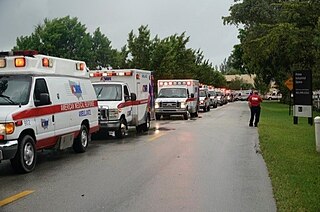
Emergency medical services (EMS), also known as ambulance services or paramedic services, are emergency services that provide urgent pre-hospital treatment and stabilisation for serious illness and injuries and transport to definitive care. They may also be known as a first aid squad, FAST squad, emergency squad, ambulance squad, ambulance corps, life squad or by other initialisms such as EMAS or EMARS.
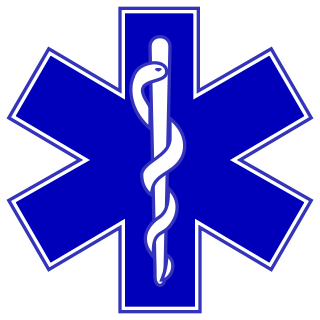
An emergency medical technician (EMT), also known as an ambulance technician, is a health professional that provides emergency medical services. EMTs are most commonly found working in ambulances. In English-speaking countries, paramedics are a separate profession that has additional educational requirements, qualifications, and scope of practice.

A paramedic is a health care professional whose primary role is to provide advanced emergency medical care for critical and emergent patients who access the emergency medical system.

A certified first responder is a person who has completed a course and received certification in providing pre-hospital care for medical emergencies. Certified individuals should have received much more instruction than someone who is trained in basic first aid and cardiopulmonary resuscitation (CPR) but they are not necessarily a substitute for more advanced emergency medical care rendered by emergency medical technicians (EMTs) and paramedics. First responders typically provide advanced first aid level care, CPR, and automated external defibrillator (AED) usage. The term "certified first responder" is not to be confused with "first responder", which is a generic term referring to the first medically trained responder to arrive on scene and medically trained telecommunication operators who provide pre-arrival medical instructions as trained Emergency Medical Dispatchers (EMD). Many police officers and firefighters are required to receive training as certified first responders. Advanced medical care is typically provided by EMS, although some police officers and firefighters also train to become emergency medical technicians or paramedics.
A medical director is a physician who provides guidance and leadership on the use of medicine in a healthcare organization. These include the emergency medical services, hospital departments, blood banks, clinical teaching services and others. A medical director devises the protocols and guidelines for the clinical staff and evaluates them while they are in use.
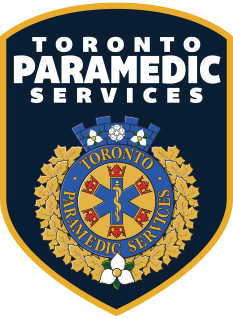
The City of Toronto Paramedic Services, is the statutory emergency medical services provider in Toronto, Ontario, Canada. The service is operated as a division of the City of Toronto, under the Community & Social Services cluster. The service is funded by the municipal tax base, and operates similarly to other municipal divisions, such as the Toronto Parks, Forestry & Recreation division, or the Toronto Water division, but retains operational independence from other divisions. While under municipal government control, it is subject to provincial legislation and licensing. It is not the only service provider in its area; private-for-profit medical transport services also provide routine, non-emergency transports and coverage for special events, but the statutory emergency medical system is the only provider permitted to service emergency calls.

A paramedic is a healthcare professional, providing pre-hospital assessment and medical care to people with acute illnesses or injuries. In Canada, the title paramedic generally refers to those who work on land ambulances or air ambulances providing paramedic services. Paramedics are increasingly being utilized in hospitals, emergency rooms, clinics and community health care services by providing care in collaboration with registered nurses, registered/licensed practical nurses and registered respiratory therapists.

Paramedics in Germany are the main providers of emergency care in emergency medical services in Germany. There exist two professional levels regulated by federal law, the Rettungsassistent and the Notfallsanitäter.

In the United States, the paramedic is a professional whose primary focus is to provide advanced emergency medical care for critical and emergency patients who access Emergency Medical Services (EMS). This individual possesses the complex knowledge and skills necessary to provide patient care and transportation. Paramedics function as part of a comprehensive EMS response, under medical oversight. Paramedics perform interventions with the basic and advanced equipment typically found on an ambulance. The paramedic is a link from the scene into the health care system. One of the eligibility requirements for state certification or licensure requires successful completion of a nationally accredited Paramedic program at the certificate or associate degree level. Each state varies in requirements to practice as a paramedic, and not all states require licensure.

A paramedic in Australia is a health care professional who responds to and treats all types of medical and trauma emergencies outside of a hospital setting before and during transportation to an appropriate medical facility. Paramedics also work in the inter-facility transport environment where a paramedic will continue or upgrade medical care to a higher level while transporting a patient from one healthcare facility to another. Paramedics are able to treat patients in the pre-hospital setting, and can transport them to a hospital-based emergency department if deemed necessary. A new paramedic is evolving, the Paramedic Practitioner. The Paramedic Practitioner provides primary health care in a range of health settings and forms part of a multidisciplinary medical team. In Australia, use of the term paramedic is lawfully restricted to the use of those registered with AHPRA.
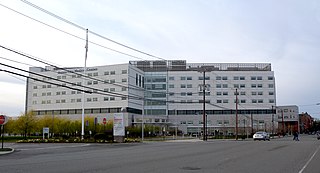
The Jersey City Medical Center is a hospital in Jersey City, New Jersey. The hospital has had different facilities in the city. It is currently located on a 15-acre campus at Grand Street and Jersey Avenue overlooking New York Harbor and Liberty State Park. The campus includes three facilities: the Wilzig Hospital, the Provident Bank Ambulatory Center, and the Christie Kerr Women's Health Center. The hospital serves as a regional referral and teaching hospital.

Louisville Metro Emergency Medical Services is the primary provider of pre-hospital life support and emergency care within Louisville-Jefferson County, Kentucky. LMEMS is a governmental department that averages 90,000 calls for service, both emergency and non-emergency, each year.
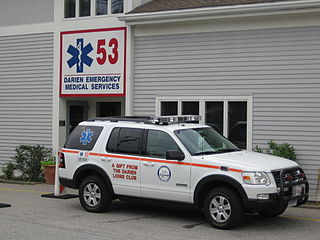
In the United States, emergency medical services (EMS) provide out-of-hospital acute medical care and/or transport to definitive care for those in need. They are regulated at the most basic level by the National Highway Traffic Safety Administration, which sets the minimum standards that all states' EMS providers must meet, and regulated more strictly by individual state governments, which often require higher standards from the services they oversee.

Emergency medical services in Canada are the responsibility of each Canadian province or territory. The services, including both ambulance and paramedic services, may be provided directly by the province, contracted to a private provider, or delegated to local governments, which may in turn create service delivery arrangements with municipal departments, hospitals or private providers. The approach, and the standards, vary considerably between provinces and territories.
The Commission on Accreditation of Medical Transport Systems (CAMTS), is an independent, non-profit agency based in Sandy Springs, South Carolina, which audits and accredits fixed-wing, rotary wing, and surface medical transport services worldwide to a set of industry-established criteria. CAMTS has accredited 182 medical transport programs worldwide as of February, 2017.
Transcare Ambulance was the largest private provider of advanced life support (ALS) and basic life support (BLS) ambulance transportation services in the tri-state area. Its main operation areas of New York City, the Hudson Valley, Long Island, the state of Delaware, the Baltimore-Washington DC corridor and in numerous locations in Pennsylvania. It was the largest privately owned ambulance service in the Mid-Atlantic. It was the largest privately owned Public Benefits Corporation ambulance and Paratransit service in the Tri-State Area

Northern Dutchess Paramedics provides advanced life support (ALS) and basic life support (BLS) ambulance transportation services in the Hudson Valley region of New York, USA. NDP operates ambulances staffed by emergency medical technicians (EMTs) and paramedics. NDP holds emergency response 9-1-1 contracts in Dutchess County, Columbia County and Litchfield County. Within Dutchess County, NDP has been assigned a department ID number of "84".

New Orleans Emergency Medical Services is the primary provider of advanced life support emergency medical services to the city of New Orleans, Louisiana, United States. Unlike most other emergency medical services in the United States, New Orleans EMS is not part of the New Orleans Fire Department; rather, New Orleans EMS. is operated by the New Orleans Health Department and the New Orleans Office of Homeland Security and Emergency Preparedness.

Air medical services is a comprehensive term covering the use of air transportation, aeroplane or helicopter, to move patients to and from healthcare facilities and accident scenes. Personnel provide comprehensive prehospital and emergency and critical care to all types of patients during aeromedical evacuation or rescue operations aboard helicopter and propeller aircraft or jet aircraft.
Vassar Brothers Medical Center, now part of Nuvance Health is a medical facility located in the city of Poughkeepsie, New York. It is one of two major medical centers located in Dutchess County, New York, the other being MidHudson Regional Hospital, a member of the Westchester Medical Center Health Network, or WMCHealth. Vassar Hospital has been a part of the Nuvance Health system since its previous parent, Health Quest, merged with the Western Connecticut Health Network in 2019.















